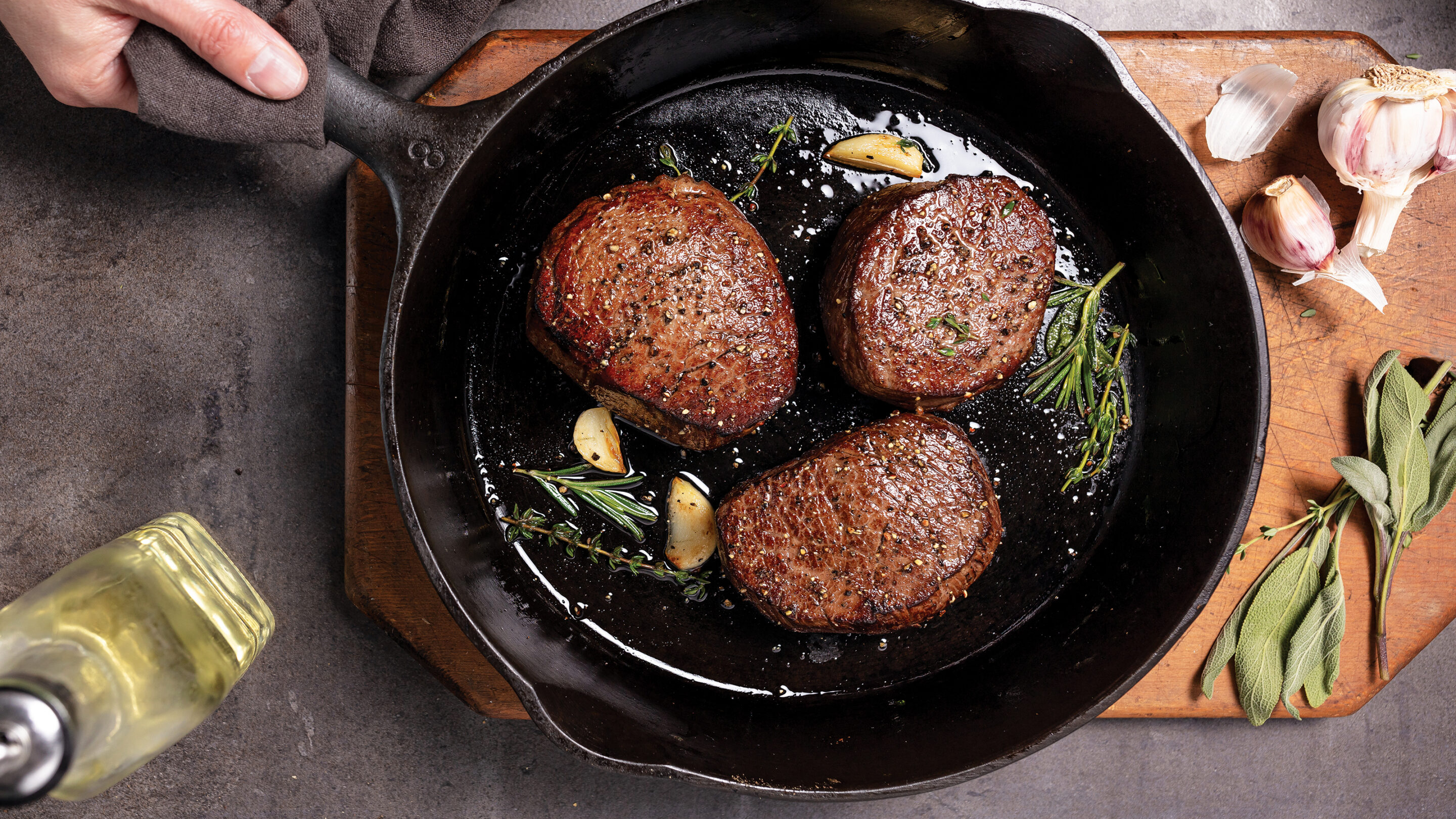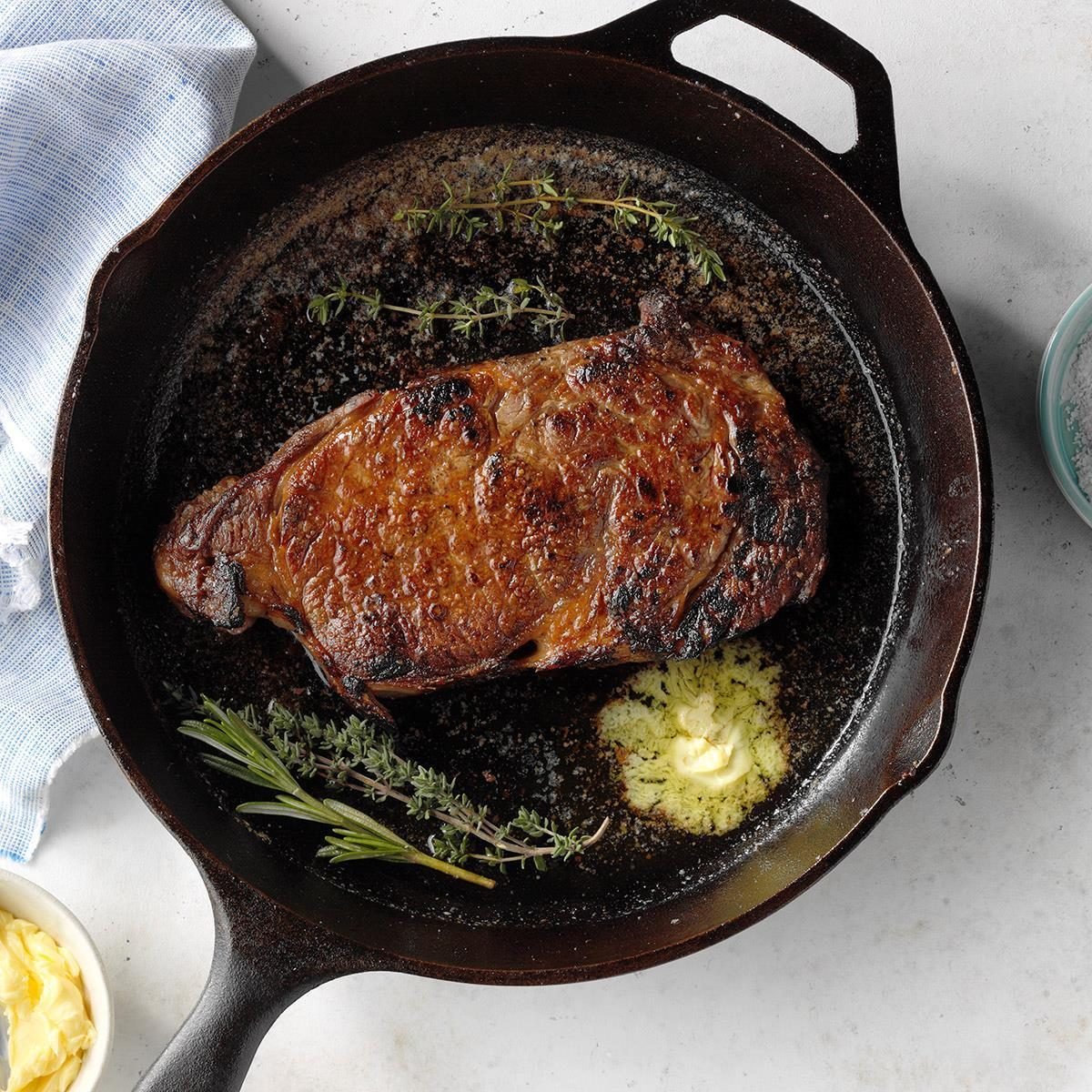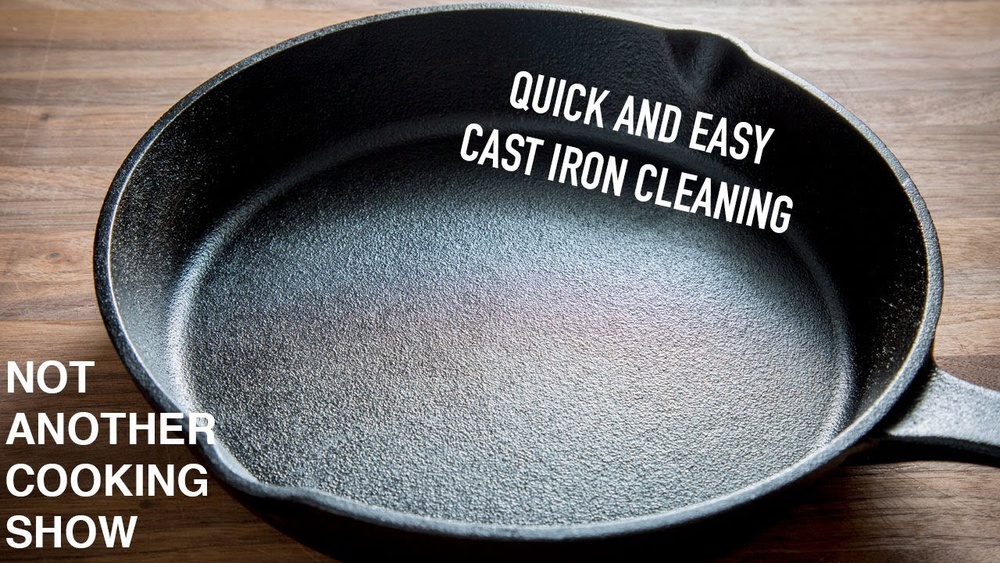You just cooked a perfect steak in your cast iron skillet, and now comes the tricky part—cleaning it without ruining that hard-earned seasoning. If you’ve ever felt unsure about how to clean your skillet properly, you’re not alone.
The right cleaning method keeps your pan non-stick, rust-free, and ready for your next meal. You’ll discover simple, effective steps to clean your cast iron skillet after cooking steak, so your pan stays in top shape for years to come.
Keep reading to unlock the secrets that professional chefs use every day!

Credit: fieldcompany.com
Why Clean Cast Iron Properly
Cleaning a cast iron skillet properly after cooking steak is very important. It keeps the pan in good shape for many years. Proper cleaning helps keep the skillet ready for the next meal. It also protects the cooking surface and flavor. Taking care of your skillet means better cooking results every time.
Preserving Seasoning
The seasoning is a layer of oil baked onto the pan. It gives the skillet its non-stick surface. Proper cleaning stops this layer from washing away. Using harsh soap or scrubbing too hard can damage the seasoning. Gentle cleaning keeps the oils and flavors intact. This helps the skillet cook food evenly and taste better.
Preventing Rust
Cast iron can rust if left wet or dirty. Rust weakens the pan and ruins its surface. Drying the skillet well after cleaning stops rust from forming. Oil the pan lightly to add a protective layer. This keeps water away and keeps the skillet shiny. Protecting against rust means your skillet will last a lifetime.
Tools You’ll Need
Cleaning a cast iron skillet after cooking steak needs the right tools. These tools help keep the skillet in good shape. They make cleaning easy and quick. You don’t need many items to clean well. Just a few simple tools will do the job perfectly.
Scraper Or Brush
A scraper or brush removes stuck food bits from the skillet. Use a plastic scraper or stiff brush. Metal tools can damage the skillet’s surface. Scrape gently to avoid scratching. This keeps the seasoning layer safe and strong.
Salt And Water
Coarse salt acts like a natural scrubber. Mix it with a little water to clean the skillet. Salt helps remove grease and food without soap. It also protects the skillet’s seasoning. Use salt and water to scrub tough spots softly.
Paper Towels
Paper towels dry and wipe the skillet after cleaning. They soak up extra water to stop rust. Use fresh paper towels to dry the surface well. This step keeps your cast iron skillet ready for the next use.
Step-by-step Cleaning Process
Cleaning your cast iron skillet after cooking steak keeps it ready for the next use. Follow these easy steps to clean your skillet without damaging its surface. This process helps maintain the skillet’s seasoning and extends its life.
Cool Down Safely
Let the skillet cool down naturally. Avoid pouring cold water on a hot pan. Sudden temperature changes can cause the skillet to crack. Wait until it is warm but safe to touch.
Remove Food Residue
Use a spatula or scraper to remove leftover bits. Gently scrape to avoid scratching the surface. Do not use soap or harsh cleaners that strip the seasoning.
Use Salt Scrub
Pour coarse salt into the skillet. Use a paper towel or cloth to scrub the surface. The salt acts as an abrasive to lift stuck food. Rinse the salt away with warm water.
Rinse And Dry Thoroughly
Rinse the skillet with warm water only. Dry it immediately with a clean towel. Heat the skillet on low for a few minutes to remove moisture. This step prevents rust from forming.

Credit: www.omahasteaks.com
Re-seasoning Tips
Re-seasoning your cast iron skillet after cooking steak keeps it in top shape. It restores the protective layer that prevents rust and keeps food from sticking. Doing this right helps your skillet last longer and cook better every time.
Apply Oil Evenly
Start by wiping the skillet clean and dry. Use a small amount of cooking oil, like vegetable or flaxseed oil. Spread the oil thinly and evenly over the entire surface. Don’t forget the sides and handle. A thin layer is key. Too much oil can make the skillet sticky.
Heat For Seasoning
Place the oiled skillet upside down in an oven. Set the oven to 375°F (190°C). Let it heat for about one hour. This heat bonds the oil to the cast iron. After an hour, turn off the oven and let the skillet cool inside. This step builds a strong, smooth seasoning layer.
Common Mistakes To Avoid
Cleaning a cast iron skillet after cooking steak needs care. Avoid mistakes that can damage the skillet. These errors reduce the skillet’s lifespan and cooking performance. Knowing what to avoid helps keep your skillet in great shape for years.
Using Soap Or Detergents
Many think soap cleans better. Soap removes seasoning, the skillet’s protective layer. Without seasoning, food sticks and rust forms. Use hot water and a brush instead. Soap is harsh on cast iron and should be avoided.
Leaving Moisture Behind
Moisture causes rust on cast iron. Always dry your skillet fully after washing. Use a towel or heat it on the stove briefly. Never store the skillet wet or damp. Proper drying keeps your skillet rust-free and ready for the next use.

Credit: www.tasteofhome.com
Maintaining Your Skillet Long-term
Maintaining your cast iron skillet long-term keeps it useful and safe. Proper care stops rust and keeps the surface smooth. A well-kept skillet lasts for many years. Two key habits help: regular oiling and proper storage. Both are simple but important.
Regular Oiling
Oiling your skillet after cleaning protects it from moisture. Use a small amount of cooking oil. Spread it evenly inside and outside the pan. Wipe off extra oil with a paper towel. This creates a thin, protective layer. It stops rust and keeps the skillet non-stick. Do this each time you clean your pan.
Proper Storage
Store your cast iron in a dry place. Avoid damp spots that cause rust. Keep the lid off or use a paper towel inside. This lets air flow and stops moisture build-up. Do not stack heavy items on top of the skillet. Proper storage keeps your pan ready for the next meal.
Frequently Asked Questions
How Do I Clean A Cast Iron Skillet After Steak?
Rinse the skillet with hot water immediately after cooking. Use a brush or sponge to remove residue. Avoid soap to maintain seasoning. Dry thoroughly and apply a light oil layer to prevent rust.
Can I Use Soap On A Cast Iron Skillet?
It’s best to avoid soap as it can strip the skillet’s seasoning. Mild soap occasionally is okay if the skillet is well-seasoned. Always reapply oil after cleaning to protect the surface and maintain non-stick properties.
How Do I Remove Stuck-on Steak Bits From Cast Iron?
Pour coarse salt into the skillet, scrub gently with a paper towel or sponge. The salt acts as an abrasive to lift stuck bits without damaging the seasoning. Rinse with hot water and dry immediately.
Should I Soak My Cast Iron Skillet After Cooking Steak?
No, avoid soaking cast iron in water. Prolonged moisture can cause rust and damage the seasoning. Clean promptly with hot water and scrub if needed, then dry and oil the skillet.
Conclusion
Cleaning your cast iron skillet after cooking steak is simple and quick. Use warm water and a soft brush to remove stuck bits. Avoid soap or harsh scrubbing to keep the seasoning intact. Dry the pan completely to stop rust.
Apply a thin layer of oil to protect the surface. Regular care keeps your skillet ready for many tasty meals. Enjoy cooking with confidence and a well-kept pan every time.

